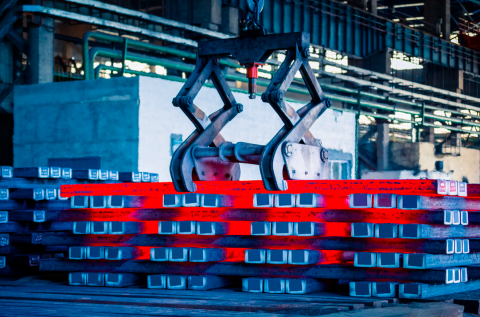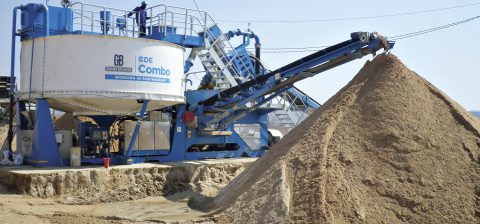SA Mining
Carbon Tax
Amid renewed allegations positioning South Africa in the top tier of the worst polluters of air in the world, government, in its efforts to meet agreements on global climate change, is hell-bent on making delinquent big-boy polluters pay for the negative impact that their emissions have on the environment, health and well-being of fellow countrymen.
In line with most other countries in the world, the South African government firmly upholds the popular opinion that climate change represents one of the biggest challenges faced by humankind, and in order to reduce greenhouse gas (GHG) emissions in a sustainable, cost-effective and affordable manner, deemed it reasonable to introduce a new environmental levy in the form of a carbon tax.
Subsequently, South Africa effected the Carbon Tax Act 15 of 2019 (CTA) on 1 June 2019, with the first “carbon tax returns” due at the end of December 2019.
But what does this mean for industries such as the mining and industrial manufacturing sectors in South Africa?
More importantly, most companies at first glance of the act raise valid questions, such as: How should a company go about introducing a policy and standard operating procedures when it comes to compliance with the CTA? Is government ready to deal with the first flurry of carbon tax returns by the end of 2019? Are the mandated officials trained and ready to handle the technical aspects of the carbon tax returns? And last but not least: How will National Treasury, as custodian of the CTA, through its implementing agent, the South African Revenue Service, enforce the CTA?
First of all, what is the CTA all about? The CTA levies a tax (similar to an environmental levy) which is payable to the National Revenue Fund by any person who conducts an activity in South Africa resulting in GHG emissions above the threshold for the specified activity determined in accordance with Schedule 2 of the act.
Currently carbon tax is levied at a rate of R120 per tonne of carbon dioxide equivalent of the GHG emissions of the taxpayer.
The activities listed in Schedule 2 are numerous and include fuel combustion activities, transport, refineries, surface and underground coal mining (in respect of fugitive emissions), industrial processes and product use emissions such as coal gasification, and the production of cement, iron, steel and glass.
National Treasury, in a formal media statement, announced that, “The implementation of the carbon tax will be complemented by a package of tax incentives and revenue recycling measures to minimise the impact in the first phase of the policy. To cushion the potential adverse impacts on energy-intensive sectors such as mining and iron and steel, the introduction of the carbon tax for the first phase will not have an impact on the price of electricity.” However, it is the follow-up phases that should be particularly worrying to the mining and steel industries, to use only limited examples.
The first phase of the carbon tax regime, running from 1 June 2019 until 31 December 2022, provides tax-free emission allowances ranging from 60 to 95% for listed activities that are subject to the carbon tax levy. This includes a basic tax-free allowance of 60% for all activities, a 10% process and fugitive emissions allowance, a maximum 10% allowance for companies that use carbon offsets to reduce their tax liability, a performance allowance of up to 5% for companies that reduce the emissions intensity of their activities, a 5% carbon budget allowance for complying with the reporting requirements and a maximum 10% allowance for trade exposed sectors.
The million-dollar question is: What happens after the first phase running from 1 June 2019 until 31 December 2022, when the second phase kicks in from 2023 to 2030? Do scope 1 “big emitters” understand the potential impact on their business once the “honeymoon phase” with all its incentives comes to an end and sees the introduction of an electricity generation tax in respect of the generation of electricity from fossil fuels, in addition to the carbon tax levy?
I am in agreement with the Minerals Council South Africa’s viewpoint that although the CTA provides for regulations pertaining to carbon offset incentives, the introduction of the regulatory mechanisms to effect these incentives are still a long way off, particularly since the carbon offset regulations are still at the consultation stage, while performance benchmark regulations and trade exposure regulations haven’t even been subjected to any formal consultation stage.
A number of our mining and industrial manufacturing clients raised their concerns over the timing of the introduction of the CTA, believing it is not appropriate for a developing economy with energy-intensive industries to be subjected to a financially strenuous and uncertain carbon tax regime that hinders effective corporate tax planning, will potentially erode profit and push up electricity prices, ultimately having a knock-on effect on the general public, “causing economic loss measured in terms of GDP or welfare” as stated by the World Bank.
There is an even greater fear among the beneficiation industries, especially those undertaking smelting operations, that the cost of mandatory beneficiation processes will be subjected to an unreasonable increase in electricity tariffs, which in turn will see local beneficiation opportunities dwindle amid the search for more affordable opportunities outside the borders of South Africa.
Our mining clients also complain that the piecemeal approach to the introduction of the offset incentive regulations hampers them from calculating the estimated total financial spend that they will have to budget for in terms of their carbon tax liabilities over the next couple of years.
At least there is a little comfort in that the National Treasury will review the interaction between the carbon tax and the electricity generation levy at the beginning of the second phase of the carbon tax, before commencement of the second phase.
In a South African context and as a general observation, governance and accountability for greenhouse gas emissions data collection and reporting may not yet be well defined or subject to effective controls in most South African companies that are carbon tax-liable entities.
This begs the question on whether, at this point in time, the designated company officials such as the chief financial officer and/or regulatory compliance officer of companies to which the CTA applies, even know that there is a new statutory requirement to pay carbon tax, and if so, how to calculate the correct carbon tax levy in lieu of the annual carbon tax levy return.
How will management verify that the technical data required for populating the relevant formula is scientifically sound and will not result in a misrepresentation of facts by the company? It is vital that reliable and verifiable greenhouse gas emissions data is obtained to ensure legal compliance with a company’s internal carbon tax scheme.
Currently there is almost no guidance on the recommended or best principles and practices that carbon tax-liable entities should adopt to ensure that compliance is achieved.
It is advised that carbon tax liable entities adopt a formal internal carbon tax policy with associated internal questionnaires, procedures and controls, and establish a framework to ensure accountability for these processes and reliability of information, as well as to ensure that the correct documentary evidence is on hand to support tax calculations.
More importantly, how does a mandated official at SARS know that the technical information used to populate the relevant formulae is correct? Is there enough and appropriate institutional capacity at SARS to verify the correctness of the technical data submitted in an annual carbon tax return?
Let us look at an example of the complexity in determining a steel manufacturer’s annual carbon tax levy relevant to its industrial process. The act provides that “in respect of a tax period that is a number constituted by the sum of the respective numbers determined for each type of commodity, fuel or technology in respect of which the greenhouse gas is emitted in respect of that tax period which respective numbers must be determined in accordance with the formula: P = (G x H) in which formula— (i) ‘P’ represents the amount to be determined that must not be less than zero; (ii) ‘G’ represents the mass of each raw material used or product produced expressed in tonne in respect of which the greenhouse gas is emitted in respect of that tax period; (iii) ‘H’ represents the greenhouse gas emission factor in carbon dioxide emissions equivalent per tonne for each raw material used or product produced that must be determined in accordance with the formula: X = (C x 1) + (M x 23) + (N x 296) + (H x 11 900) + (T x 5 700) + (S x 22 200) in which formula – (aa) ‘X’ represents the number to be determined …” and so forth and so forth …
It is clear that the prescribed formulae are not for the faint-hearted. You need to know what you’re doing when calculating your annual carbon tax return. Companies should be diligent in acquiring the services of an appropriately qualified and experienced technical expert as well as the person who will ultimately have to populate the relevant formulae, from a financial and corporate governance perspective.
It is a common phenomenon to see that, with the introduction of new but complex statutory provisos which take a couple of years to filter through the system to the ground level, one also sees a more ingenious, however dubious, process of deliberately looking for loopholes in the new legislation. Especially in the instance where a new law such as the CTA is of such a complex nature that the general populace and even your standard competent authority can be easily tricked by those in the know.
Globally we have seen a rise in the manipulation of gas emissions in order to bypass emission standards. One example is the very recent Volkswagen/Porsche scandal in South Korea, where it is alleged that the luxury automobile manufacturer, over a period of three years, intentionally installed “illicit devices” in more than 10 000 vehicles that resulted in diesel vehicles hoodwinking statutorily imposed pollution standards.
On the home front companies need to give careful consideration to the correct information being submitted as part of their annual carbon tax return, to avoid heavy fines and/or imprisonment.







 Sign-up and receive the Business Media MAGS newsletter OR SA Mining newsletter straight to your inbox.
Sign-up and receive the Business Media MAGS newsletter OR SA Mining newsletter straight to your inbox.